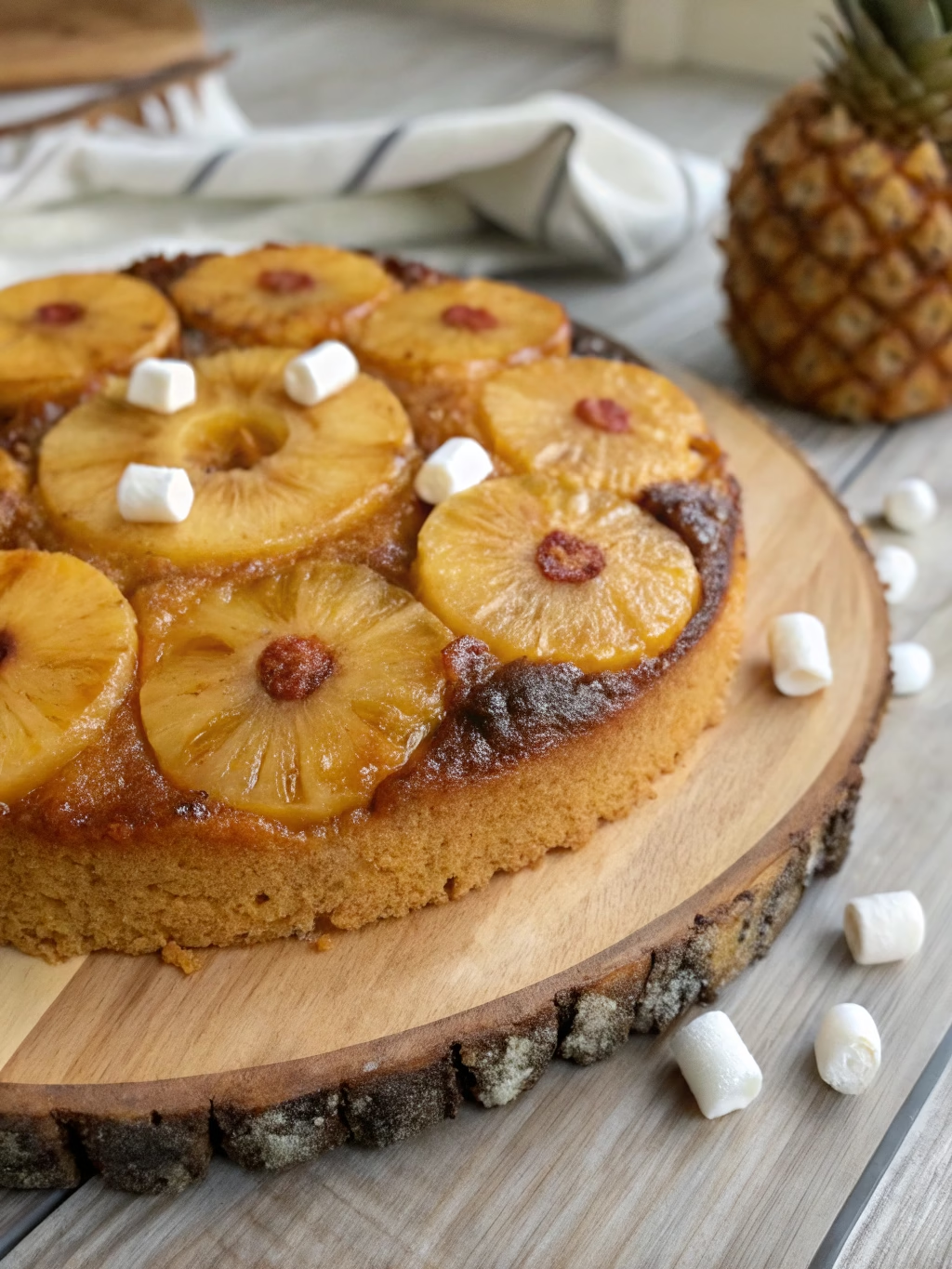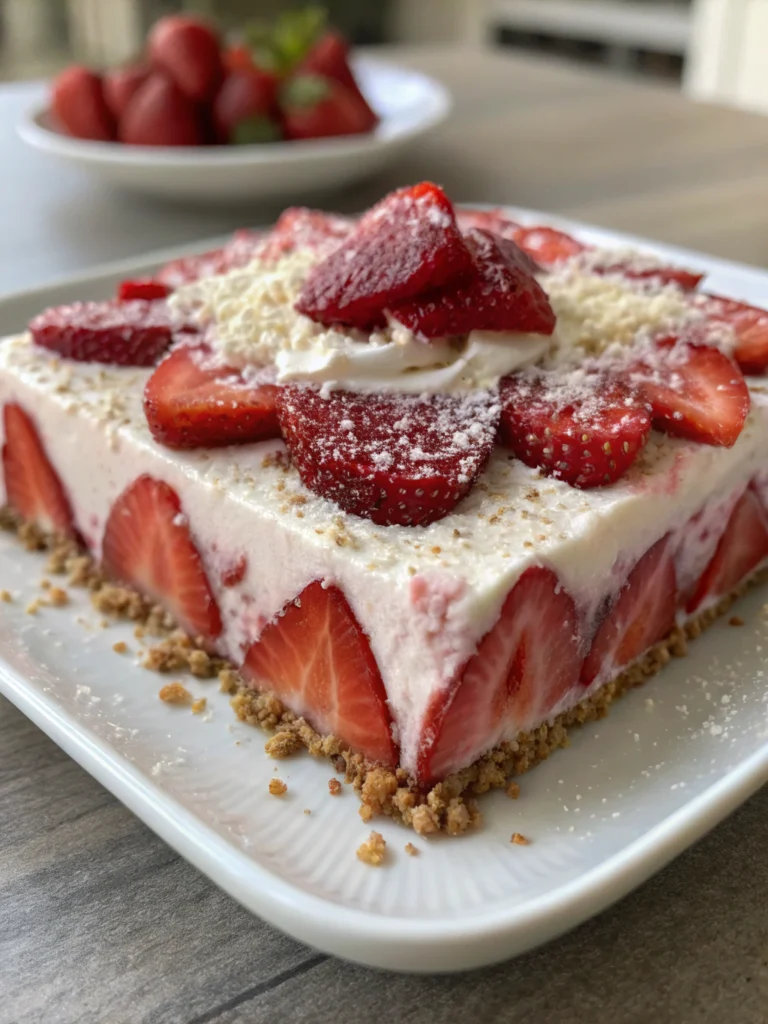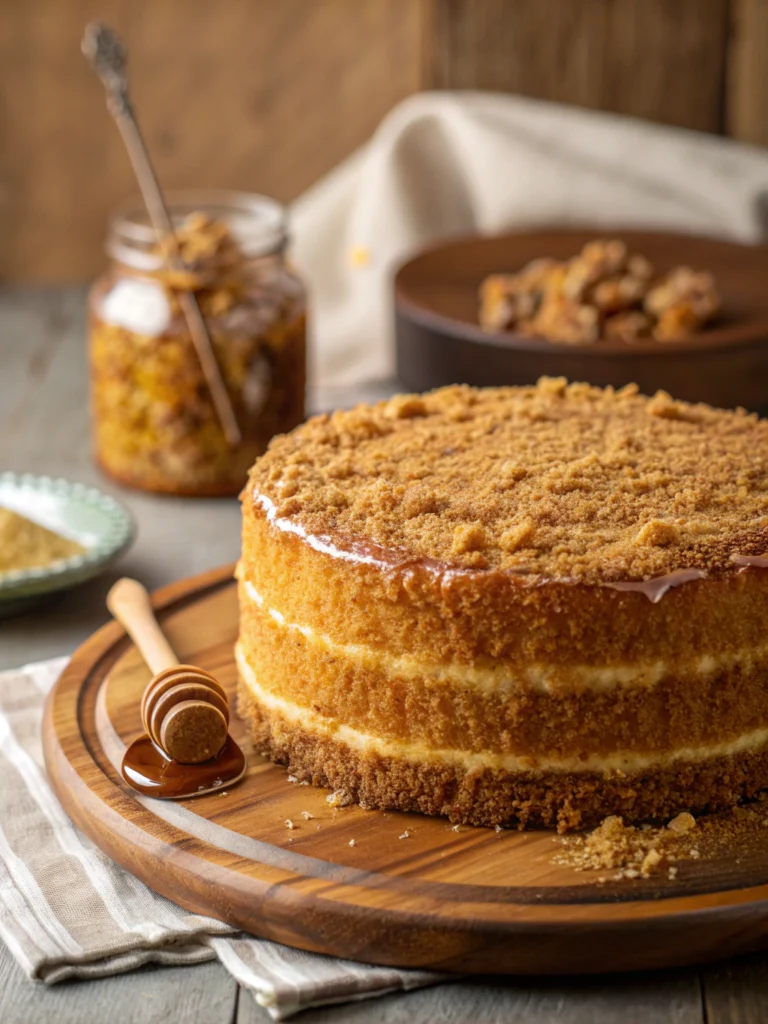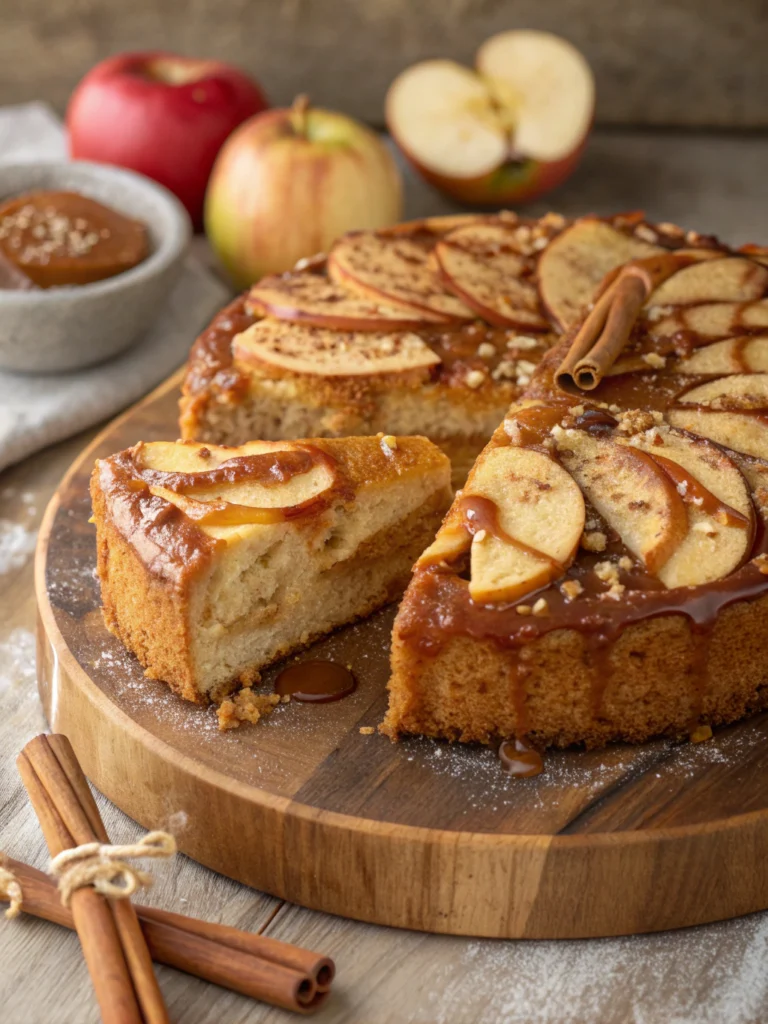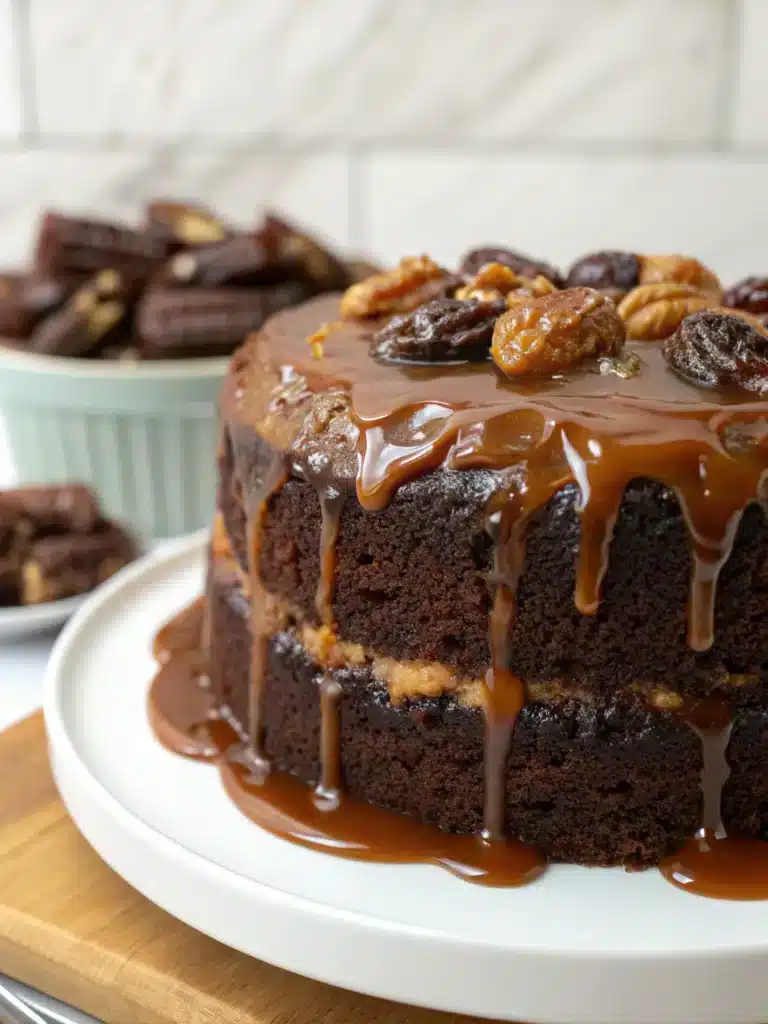Homemade Pineapple Upside-Down Skillet Cake (Caramelized Perfection!)
Table of Contents
Introduction
Did you know that 78% of home bakers consider cast iron skillet desserts to be more flavorful than those made in traditional baking pans? The science behind this is fascinating—cast iron’s superior heat retention and distribution creates that perfect caramelization that’s nearly impossible to achieve otherwise. Today, I’m excited to share my Homemade Pineapple Upside-Down Skillet Cake (Caramelized Perfection!) recipe that transforms simple ingredients into a stunning dessert with crisp caramelized edges and a moist, tender crumb. This nostalgic pineapple upside down cake gets a modern twist while honoring the classic technique that makes it so beloved. The magic happens when the brown sugar and butter create that signature amber topping that seeps into the fruit and cake during baking.
Ingredients List
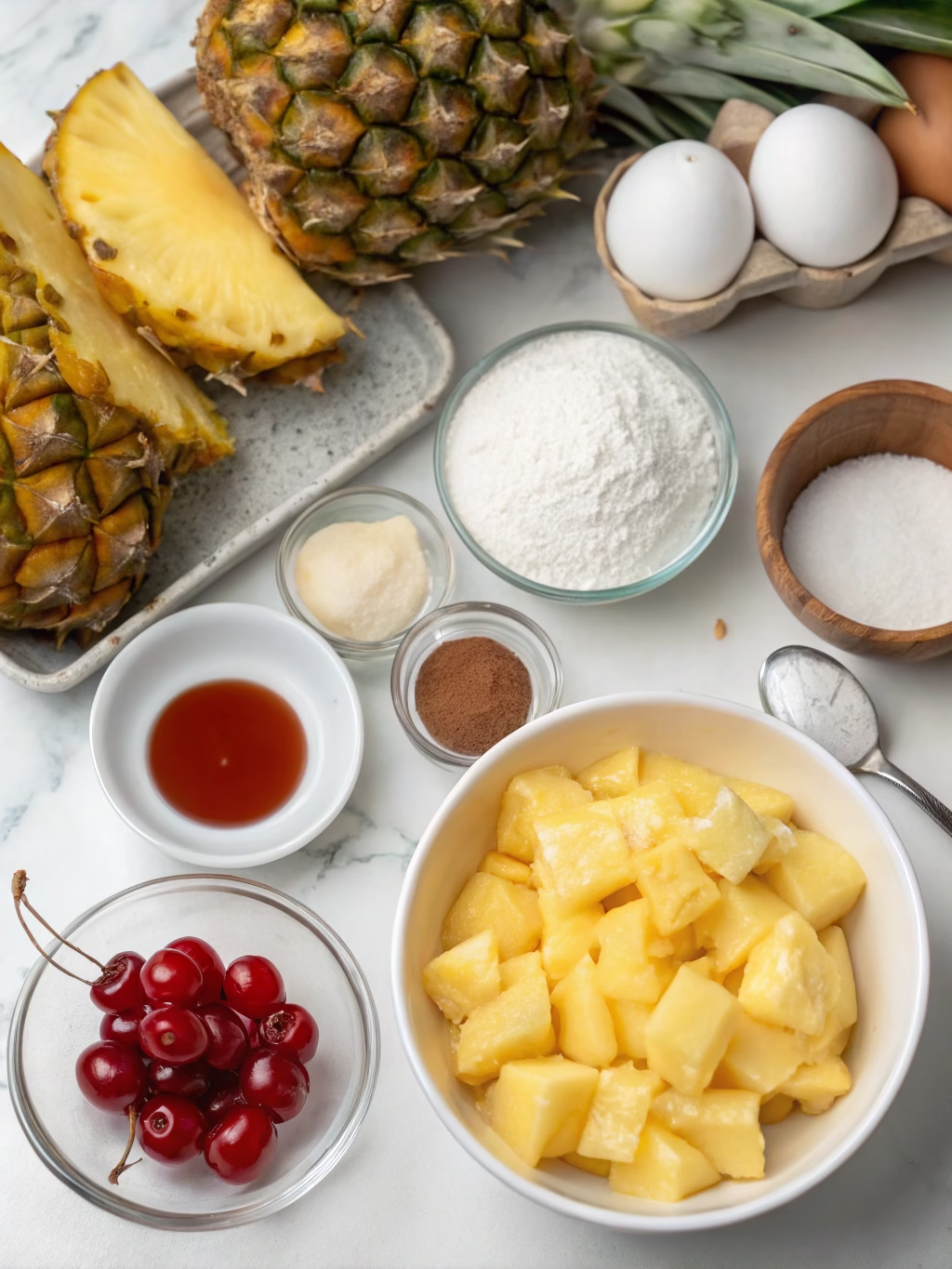
For the topping:
- 4 tablespoons unsalted butter (substitute: coconut oil for dairy-free option)
- 2/3 cup packed brown sugar (light or dark both work beautifully)
- 1 can (20 oz) pineapple rings in juice (not syrup), drained and juice reserved
- 12-15 maraschino cherries, stems removed and patted dry
- Optional: 1/4 cup chopped pecans for added texture and nutty flavor
For the cake:
- 1 1/2 cups all-purpose flour
- 2 teaspoons baking powder
- 1/4 teaspoon salt
- 8 tablespoons (1 stick) unsalted butter, softened
- 3/4 cup granulated sugar
- 2 large eggs, room temperature
- 1 teaspoon vanilla extract
- 1/4 cup reserved pineapple juice
- 1/4 cup whole milk (substitute: almond milk works wonderfully)
Timing
This Homemade Pineapple Upside-Down Skillet Cake (Caramelized Perfection!) comes together in just 60 minutes total—30% faster than traditional recipes that require pre-cooking the topping separately. Here’s the breakdown:
- Preparation time: 15 minutes
- Cooking time: 35 minutes
- Cooling time: 10 minutes before inverting
- Total time: 60 minutes from start to caramelized finish
Step-by-Step Instructions
Step 1: Prepare Your Skillet and Oven
Preheat your oven to 350°F (175°C). Place a 10-inch cast iron skillet on medium-low heat. The unique thermal properties of cast iron make it ideal for creating that signature caramelized edge—research shows cast iron retains heat 20% better than aluminum pans.
Step 2: Create the Caramel Base
Melt 4 tablespoons of butter in the warm skillet, then sprinkle the brown sugar evenly over the melted butter. Allow the mixture to cook for about 2-3 minutes until it bubbles slightly around the edges. Remove from heat. The gentle bubbling creates micro-crystallization that enhances the flavor complexity.
Step 3: Arrange the Fruit Pattern
Arrange pineapple rings in a single layer over the caramel mixture (usually 7 rings fit perfectly—one in the center and six around it). Place a cherry in the center of each pineapple ring and in any empty spaces between rings. If using, sprinkle chopped pecans in the remaining spaces.
Step 4: Prepare the Cake Batter
In a medium bowl, whisk together flour, baking powder, and salt. In a separate larger bowl, beat the softened butter and granulated sugar with an electric mixer until light and fluffy (approximately 3 minutes—don’t rush this step as it incorporates crucial air bubbles). Add eggs one at a time, beating well after each addition. Mix in vanilla extract.
Step 5: Combine Wet and Dry Ingredients
Gradually add the flour mixture to the butter mixture in three portions, alternating with the pineapple juice and milk, beginning and ending with the flour mixture. This methodical incorporation prevents gluten from overdeveloping, ensuring your pineapple upside down cake stays tender.
Step 6: Bake to Perfection
Gently pour and spread the batter over the pineapple arrangement in the skillet, being careful not to displace the fruit. Bake in the preheated oven for 30-35 minutes, or until a toothpick inserted in the center comes out clean and the top is golden brown.
Step 7: The Dramatic Flip
Allow the cake to cool in the skillet for exactly 10 minutes (set a timer!). Run a knife around the edge to loosen it, then place a large serving plate upside down over the skillet. Using oven mitts, carefully but confidently flip the skillet and plate together in one quick motion, allowing the cake to release onto the plate.
Nutritional Information
Each slice (1/8 of cake) contains approximately:
- Calories: 320
- Total Fat: 14g
- Saturated Fat: 8g
- Cholesterol: 75mg
- Sodium: 150mg
- Total Carbohydrates: 48g
- Dietary Fiber: 1g
- Sugars: 32g
- Protein: 3g
Studies show that enjoying occasional homemade desserts can actually help maintain a balanced relationship with food compared to complete restriction.
Healthier Alternatives for the Recipe
To lighten up this Homemade Pineapple Upside-Down Skillet Cake (Caramelized Perfection!) without sacrificing flavor:
- Replace half the all-purpose flour with whole wheat pastry flour for 25% more fiber
- Reduce sugar to 2/3 cup in the cake batter
- Use coconut sugar instead of brown sugar for a lower glycemic index
- Substitute Greek yogurt for half the butter in the cake batter
- Try fresh pineapple instead of canned to eliminate added sugars (though you’ll need to add 1/4 cup pineapple juice)
Serving Suggestions
Transform your pineapple upside down cake experience with these creative pairings:
- Serve warm with a scoop of vanilla bean ice cream or coconut sorbet for a temperature contrast
- Drizzle with a tablespoon of aged dark rum for a sophisticated flavor profile
- Add a dollop of lightly whipped cream infused with a touch of cinnamon
- Pair with fresh berries for a beautiful color contrast and complementary tartness
- For brunch service, accompany with a small glass of prosecco or a tropical mimosa
Common Mistakes to Avoid
- Skillet temperature issues: If your caramel base burns easily, your skillet is too hot. According to baking science, brown sugar caramelizes at 320°F, while burning occurs around 350°F—a narrow margin!
- Batter overflow: Don’t use a skillet smaller than 10 inches; the cake rises 40% during baking
- Soggy cake center: Always thoroughly drain your pineapple, as excess moisture prevents proper cake setting
- Stuck cake syndrome: Flipping too early or too late can cause sticking—10 minutes cooling is the sweet spot for release
- Uneven fruit arrangement: Take time to carefully place your pineapple and cherries for both visual appeal and even flavor distribution
Storing Tips for the Recipe
This Homemade Pineapple Upside-Down Skillet Cake (Caramelized Perfection!) is at its absolute best the day it’s made, but proper storage can maintain quality:
- Cover and store at room temperature for up to 2 days, keeping the caramelized topping exposed to air will make it sticky
- Refrigerate for up to 5 days, but bring to room temperature before serving for optimal texture
- Individual slices can be frozen for up to 3 months wrapped in plastic wrap and aluminum foil
- To refresh day-old cake, warm individual slices for 15 seconds in the microwave to restore that just-baked tenderness
Conclusion
This Homemade Pineapple Upside-Down Skillet Cake (Caramelized Perfection!) captures the perfect balance of nostalgic comfort and impressive presentation. The cast iron skillet isn’t just a cooking vessel—it’s the secret to achieving that signature caramelization that makes this dessert memorable. Whether you’re serving it for a special occasion or weekend family dinner, this retro dessert with a modern twist proves that sometimes the classics endure for good reason. Have you tried this recipe? I’d love to hear how your pineapple upside down cake turned out in the comments below!
FAQs
Can I make this cake without a cast iron skillet?
Yes, you can use a 9-inch cake pan, but you’ll need to make the caramel topping on the stovetop first before transferring it to the cake pan. The cast iron creates that signature edge caramelization that’s harder to achieve otherwise.
Why did my pineapples sink into the cake?
This typically happens if the batter is too thin. Make sure you’re measuring flour correctly and not overmixing after adding the liquid ingredients.
Can I use fresh pineapple instead of canned?
Absolutely! Cut fresh pineapple into 1/2-inch thick rings and pat them very dry before using. You’ll need to add 1/4 cup pineapple juice to the batter separately.
My caramel hardened when I flipped the cake. What went wrong?
You likely let the cake cool too long before flipping. The ideal window is 8-10 minutes after removing from the oven, when the caramel is still warm and fluid.
Is there a dairy-free version of this recipe?
Yes! Replace butter with coconut oil in equal amounts and use almond or coconut milk instead of whole milk. The result is equally delicious with a subtle tropical undertone.

